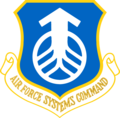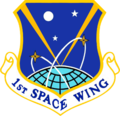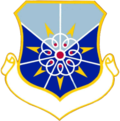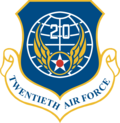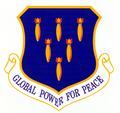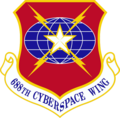Space Operations Command
| Space Operations Command | |
|---|---|
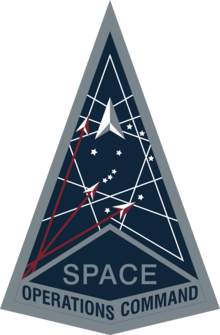 Space Operations Command emblem | |
| Founded | 21 October 2020; 3 years, 5 months[1] as Space Operations Command 1 September 1982; 41 years, 7 months Field command |
| Role |
|
| Size | 11,000 personnel CMSgt Caleb M. Lloyd[9] |
| Insignia | |
| Flag |  |
| Space Operations Command subdued emblem |  |
Space Operations Command (SpOC) is the
It was established on 1 September 1982 as Space Command (SPACECOM), the first dedicated
History
Establishing Space Command

The Air Force's space program began in 1954 with the establishment of the
As Air Force space programs began to mature in the 1970s and early 1980s, their disjointed nature presented operational issues. The impending deployment of the
Calls for an independent space command grew within the 1980s, with some in Congress even calling for the Air Force to be reorganized as the U.S. Aerospace Force. On 1 September 1982, the Air Force established Space Command as a major command, creating the first operational space command within the United States Armed Forces.[12]
Unifying Space Forces under Air Force Space Command
-
Space Communications Division
-
2d Space Wing
-
3d Space Support Wing
-
73d Space Group
When Space Command was established, it was headquartered at
Unlike Strategic Air Command, Air Force Systems Command was reluctant to transfer over its space assets. The
The Gulf War, Space Commission, and Global War on Terrorism
-
Space and Missile Systems Center
-
Space Innovation and Development Center
-
614th Air and Space Operations Center
-
30th Space Wing
-
45th Space Wing
-
310th Space Wing (Reserve)
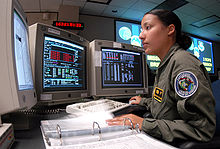
Air Force Space Command provided significant support to coalition forces during the
In 1991, Air Force Space Command underwent a major reorganization, inactivating the 9th Space Division and Space Communications Division and replacing it with the
In 2009, the Air Force decided to consolidate its nuclear forces, split between Air Force Space Command's Twentieth Air Force missiles and
-
90th Space Wing
-
91st Space Wing
-
341st Space Wing
-
321st Missile Group
-
Air Force Network Integration Center
Redesignation as Space Operations Command and transfer to the Space Force

When the
In July 2020, United States Space Force's wings and operations groups were renamed deltas and it assumed responsibility for space operations units previously part of
On 21 October 2020, United States Space Force was redesignated as Space Operations Command, officially transferring from a U.S. Air Force major command to a U.S. Space Force field command when Lieutenant General
On 22 April 2021, the Space and Missile Systems Center was realigned from Space Operations Command to the U.S. Space Force. In May 2021, the
Symbolism
Space Operations Command emblem and color
The large delta in the Space Operations Command emblem is derived from the legacy Air Force Space Command emblem, which also is found in the
Platinum is Space Operations Command's distinguishing color and matches the U.S. Space Force and U.S. Space Command seals. Platinum represents the strength of Guardians and Airmen, the rarity of its calling, and the nobility of its mission.[5]
Space Operations Command's emblem was unveiled on 21 October 2020 at
Air Force Space Command emblem and motto

The first commander of Air Force Space Command, General James V. Hartinger, suggested that the Air Force Space Command emblem be patterned after the Space Badge and the final emblem drew on it for most of its elements.[23]
The centrally dominant globe represents the earth as viewed from space, the earth being both the origin and control point for all space satellites. The lines of latitude and longitude emphasize the global nature of Air Force space operations. The emblem is provided its distinctive appearance by two symmetric ellipses representing the orbital paths traced by satellites in earth orbit; the satellites themselves being symbolically depicted as four point stars. The 30 degree orbital inclination and symmetrically opposed placement of the satellites signify the worldwide coverage provided by Air Force satellites in accomplishing the surveillance and communications missions. The slight tapering of the orbital ellipses represents the characteristic eastward motion. The centrally superimposed deltoid symbolizes both the Air Force upward thrust into space and the launch vehicles needed to place all satellites in orbit. The distinctive dark blue background shading, small globe, and stars symbolize the space environment.[23]
Air Force Space Command's motto, "Guardians of the High Frontier," was developed from the submissions of three individuals at Space Command and the United States Air Force Academy before being announced on 17 February 1983.[23] The motto would later inspire the title of "Guardian" for U.S. Space Force members.[24]
Structure
List of commanders
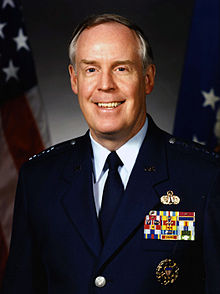
| No. | Portrait | Name | Term | ||
|---|---|---|---|---|---|
| Took office | Left office | Duration | |||
| 1 | Lieutenant General Stephen Whiting (born 1967) | 21 October 2020 | 9 January 2024 | 3 years, 80 days | |
| 2 | Lieutenant General David N. Miller (born c. 1971) | 9 January 2024 | Incumbent | 100 days | |
See also
U.S. Armed Forces forces commands
- United States Army Forces Command
- United States Marine Corps Forces Command
- United States Fleet Forces Command
- Air Combat Command
References
- ^ a b "Space Operations Command (USSF) Lineage". Retrieved 31 January 2022.
- ^ "About Space Operations Command". www.spoc.spaceforce.mil.
- ^ "Space Force's operational commander describes history of space as a contested domain". Space Operations Command (SpOC).
- ^ "Space Operations Command Motto Reveal: Via Vincimus". DVIDS.
- ^ a b c d "Space Operations Command Emblem Reveal".
- ^ a b c d e f g "Space Operations Command (USSF)".
- ^ "Dr. Brian T. Kehl". www.spoc.spaceforce.mil.
- ^ "BGen Kyle C. Paul". Space Operations Command. 16 June 2022.
- ^ "CHIEF MASTER SERGEANT CALEB M. LLOYD". Space Operations Command. 7 August 2023.
 This article incorporates text from this source, which is in the public domain.
This article incorporates text from this source, which is in the public domain.
- ^ "About Space Operations Command".
- U.S. Space Force. Archived from the originalon 25 May 2023.
- ^ a b c d e f g https://www.airuniversity.af.edu/Portals/10/AUPress/Books/B_0063_SPIRES_BRADLEY_STURDEVANT_ECKERT_BEYOND_HORIZONS.pdf [bare URL PDF]
- ^ "GPS and the World's First "Space War"". Scientific American.
- ^ a b "AFSPC History". www.afspc.af.mil.
- ^ Chiles, Cody (27 December 2019). "14th Air Force Redesignated as Space Operations Command". Space Operations Command. Retrieved 1 January 2020.
- ^ "SpOC Fact Sheet". Space Operations Command. Retrieved 22 October 2020.
These initial actions provided immediate structure for the USSF but were not intended to reflect the end-state of the new branch of Service.
- ^ Kirby, Lynn (30 June 2020). "USSF field command structure reduces command layers, focuses on space warfighter needs". United States Space Force. Retrieved 22 October 2020.
The staff and operations elements of USSF at Peterson Air Force Base, Colorado, which is also the former AFSPC, will become the headquarters SpOC. There is an existing unit at Vandenberg AFB, California, named Space Operations Command, which will be renamed upon activation of the field command SpOC.
- ^ United States Space Force, Public Affairs (24 June 2020). "Space Force begins transition into field organizational structure". United States Space Force. Retrieved 3 February 2021.
- ^ "SpOC ReEngineering Explainer". DVIDS.
- ^ "Vandenberg AFB gets new U.S. Space Force name".
- ^ "USSF establishes 2nd Field Command, Guetlein assumes command". United States Space Force. 13 August 2021.
- ^ "Space Force activates Space Training and Readiness Command". United States Space Force. 23 August 2021.
- ^ a b c "Air Force Space Command (Archived) > About Us > AFSPC History > afspcemblem". www.afspc.af.mil.
- ^ "U.S. Space Force unveils name of space professionals".
- ^ https://www.petersonschriever.spaceforce.mil/SpaceDelta2/
- ^ "Col. Raj Agrawal assumes command of Delta 2". Space Operations Command (SpOC). 23 June 2023. Retrieved 3 September 2023.


